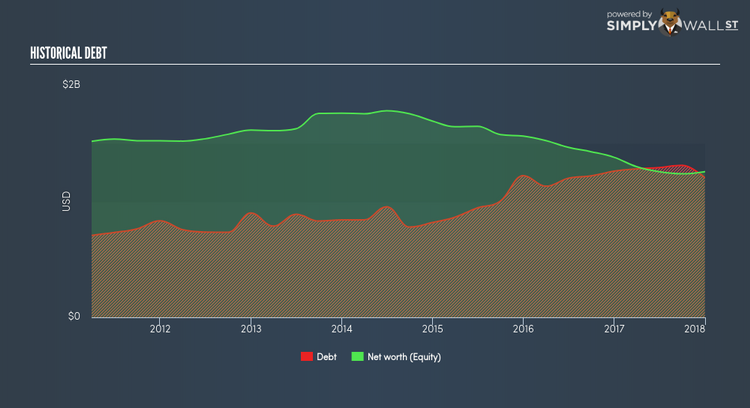What does Bristow Group Inc’s (NYSE:BRS) Balance Sheet Tell Us About Its Future?

While small-cap stocks, such as Bristow Group Inc (NYSE:BRS) with its market cap of US$468.04M, are popular for their explosive growth, investors should also be aware of their balance sheet to judge whether the company can survive a downturn. Companies operating in the Energy Services industry, in particular ones that run negative earnings, are more likely to be higher risk. So, understanding the company’s financial health becomes essential. Here are a few basic checks that are good enough to have a broad overview of the company’s financial strength. Though, since I only look at basic financial figures, I’d encourage you to dig deeper yourself into BRS here.
Does BRS generate enough cash through operations?
BRS has built up its total debt levels in the last twelve months, from US$1.13B to US$1.28B – this includes both the current and long-term debt. With this growth in debt, the current cash and short-term investment levels stands at US$96.66M , ready to deploy into the business. Additionally, BRS has generated US$10.70M in operating cash flow over the same time period, leading to an operating cash to total debt ratio of 0.83%, meaning that BRS’s operating cash is not sufficient to cover its debt. This ratio can also be interpreted as a measure of efficiency for loss making businesses as traditional metrics such as return on asset (ROA) requires a positive net income. In BRS’s case, it is able to generate 0.0083x cash from its debt capital.
Can BRS meet its short-term obligations with the cash in hand?
At the current liabilities level of US$416.35M liabilities, the company has been able to meet these obligations given the level of current assets of US$507.87M, with a current ratio of 1.22x. Usually, for Energy Services companies, this is a suitable ratio since there’s sufficient cash cushion without leaving too much capital idle or in low-earning investments.
Is BRS’s debt level acceptable?
With a debt-to-equity ratio of 95.83%, BRS can be considered as an above-average leveraged company. This is not uncommon for a small-cap company given that debt tends to be lower-cost and at times, more accessible. But since BRS is currently unprofitable, there’s a question of sustainability of its current operations. Maintaining a high level of debt, while revenues are still below costs, can be dangerous as liquidity tends to dry up in unexpected downturns.
Next Steps:
At its current level of cash flow coverage, BRS has room for improvement to better cushion for events which may require debt repayment. Though, the company will be able to pay all of its upcoming liabilities from its current short-term assets. Keep in mind I haven’t considered other factors such as how BRS has been performing in the past. I suggest you continue to research Bristow Group to get a more holistic view of the stock by looking at:
1. Future Outlook: What are well-informed industry analysts predicting for BRS’s future growth? Take a look at our free research report of analyst consensus for BRS’s outlook.
2. Valuation: What is BRS worth today? Is the stock undervalued, even when its growth outlook is factored into its intrinsic value? The intrinsic value infographic in our free research report helps visualize whether BRS is currently mispriced by the market.
3. Other High-Performing Stocks: Are there other stocks that provide better prospects with proven track records? Explore our free list of these great stocks here.
To help readers see pass the short term volatility of the financial market, we aim to bring you a long-term focused research analysis purely driven by fundamental data. Note that our analysis does not factor in the latest price sensitive company announcements.
The author is an independent contributor and at the time of publication had no position in the stocks mentioned.

